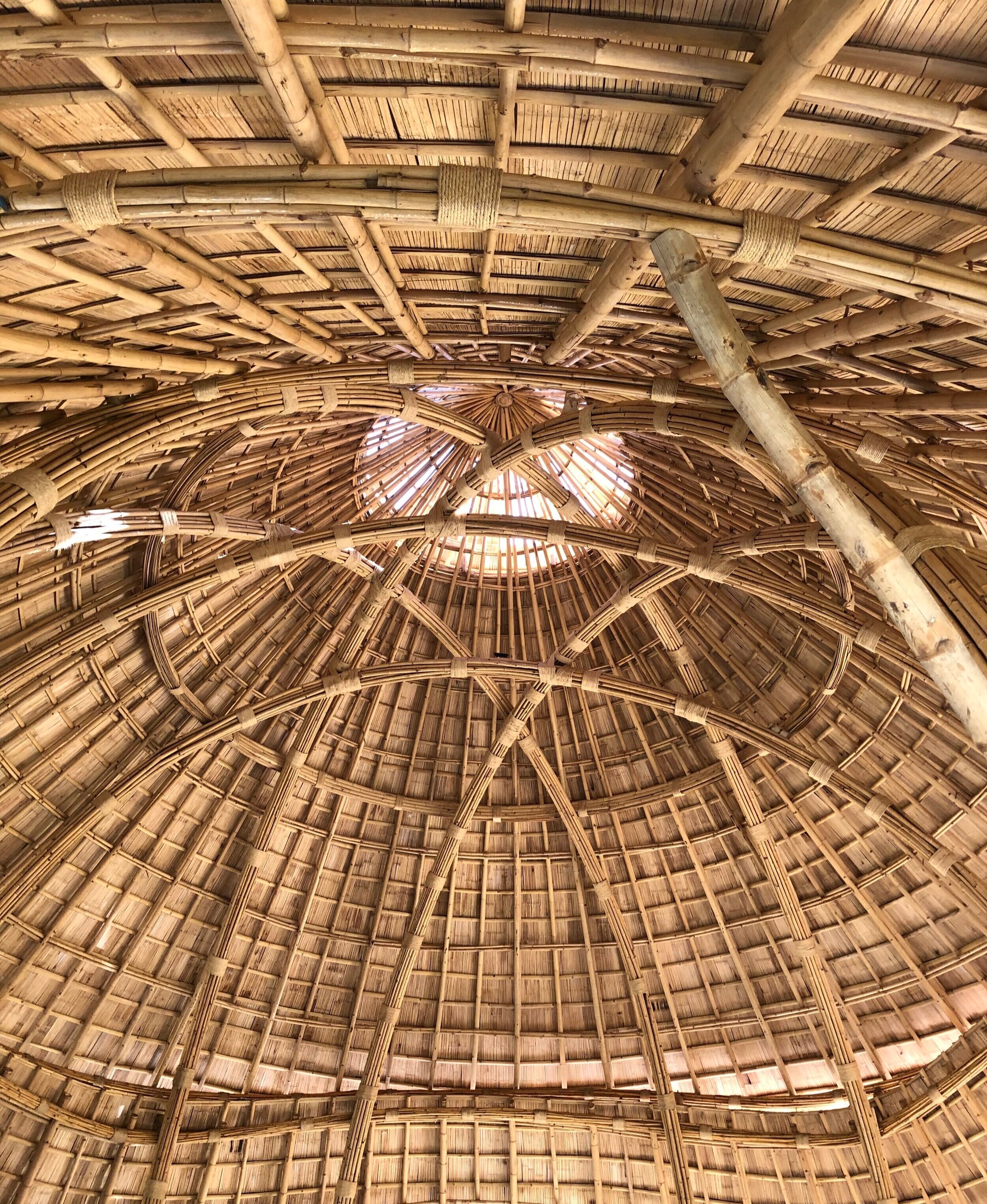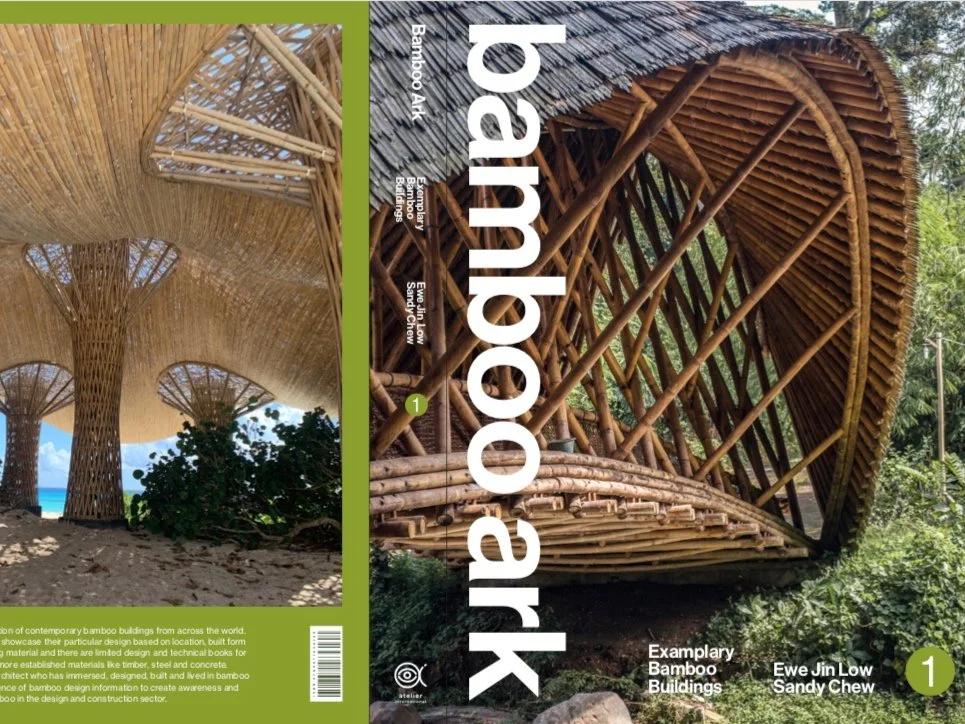Chiangmai Life - bamboo factory, design studio & school
Markus Roselieb is a man that lets his buildings do the talking - he originates from Austria, trained as medical doctor and came to Thailand over 25 years ago. He has shown by example with minimum fuss or fanfare and built up a portfolio of bamboo and earth buildings backed by a solid and cohesive community.
Markus set up both Chiangmai Life Construction and Chiangmai Life Architects and this combination of bamboo factory/workshop, architecture/design studio, construction arms and the local community has resulted in the many distinct buildings that we see today.
One of the standouts for me is how Markus has worked with the local and the refugee community harnessing their tradition, knowledge and skills to produce these buildings. Read on for more from Markus…
1. You are a very rare commodity in bamboo - you have a bamboo processing factory, you design and construct bamboo buildings, and the bamboo school that you are building keeps expanding. What is the story? How did it all start?
It started with the dream, of a more inclusive, a more complete education. Education for life, education embedded in real-time experience. Combined with the quest for a more interesting, functional and appealing architecture closer to nature. Bamboo kind of jumped in my way with the World Bamboo Congress in Bangkok joining my interest in earthen buildings to create a concept that we are still pursuing today. In the path of this quest we built a bamboo treatment and processing factory, hired mostly untrained so called hilltribe workers and trained them and slowly started to design and eventually run a design studio and architecture office. The school is a lifelong project with new ideas and new buildings every year.
2. Why is it called Chiangmai Life Architects & Construction?
The name is a tribute to this wonderful city that inspired us and that most cannot leave once they really experienced its subtle and creative vibes. And trying to bring architecture and construction back from the dead and dreadful concrete jungles inspired by the ruling design tyrant of Bauhaus to places that make people feel at home, places that create smiles, places where life can really unfold.
3. Tell us about the sourcing, harvesting and treatment/production methods that the organisation works with.
We have one main supplier whom we have trained since the early days. In the beginning we had to reject about 70% of the bamboo that came through our gates. Now it is less than 1%. In the beginning she was mostly alone in an old pickup truck that hit the road at every bump. Now she is the queen of several new pickups with hired help doing the main work and she only comes to count her money and smile. We are quite proud to have been instrumental in building her business with her. She harvests from private plantations and community forests engaging local communities to work on commission. As for treatment we use borax/boric acid baths.
4. Who constructs the buildings and if you can elaborate on the construction process especially the community, the artisans, and special skills required?
Over time we have built up several specialized teams mainly consisting of Tai Yai from the Shan states in Burma who had to flee to Thailand when the Burmese military burned down their villages. We have 2 bamboo teams, 2 earth wall teams, one landscape team, one carpenter team, one team at the factory – all highly specialized and skilled by refining their work over the years. We have built 3 small villages where they live with their families on land, electricity and water supplied by our company. They are great workers and we take care of each other more like a big family than a normal workplace with hardly any staff turnover.
5. Can you please share about the type of bamboo you use and the production process of bamboo before it is sent for construction?
Our style is quite different from the South Americans who like to use big bamboo poles, mainly Guadua or others who think the bigger the pole the better. We prefer smaller species and bundle them. Like a steel cable has a higher tensile strength than a steel rod. And is more flexible. One of our favorite species is Thyrsostachys oliveri (Thai name - phai raakdam) or T. siamensis (umbrella bamboo). These species have almost no hole and are pure fiber bundles. The bundles can be combined to any length thus giving us the ability to cover bigger spans without support columns than you could do with big individual poles. Also the feeling is much lighter, not so heavy and more refined as there are more smaller lines than a few big ones. A question of engineering and taste which way to go, I guess.
6. What are the main challenges in bamboo construction and how are you approaching these challenges?
The main challenge is the market perception of the material. As bamboo is often perceived to be a poor people’s material that is weak and doesn’t last long, it is sometimes difficult to get interesting big projects that could further expose and promote the material. Also the permit processes are not geared towards bamboo as yet.
7. What is your favourite all time bamboo building/designer and why?
Probably some of Joerg Stamm’s bridges. German engineering combined with beautiful lines of bamboo. That really changed many people’s perception
8. What makes Chiangmai Life different and unique? Also tell us more about bamboo in your part of Thailand and its prospects.
Our philosophy is to combine nature with modern design and state of the art knowledge - engineering and material sciences. We don’t think that vernacular architecture answers the needs of the present situation; on the contrary - following vernacular design will only enhance the rather outdated and negative perception of bamboo and earth as construction materials, that prevails in the market. We want to satisfy the lifestyle and design needs of the 21st century by using organic architecture that connects us to our environment and nature in an unexpected non-preaching manner. We want to bring smiles to our client’s faces every day as their home reconnects and charges them with energy from within.
9. What would be your advice to those who are enthusiastic and want to make a start in bamboo?
The same advice I would give to everyone – do the kind of work you like doing and you will automatically get good at it and be successful as you will spend the hours refining your skills that are necessary while having fun or at least not grudging what you are doing. That could be designing, producing, selling, lobbying, so many different skillsets involved in the bamboo industry like in any other. But the satisfying difference is that you will be making this a better planet whatever you do in bamboo’s sake as bamboo has the lowest carbon footprint imaginable and you will automatically improve everyone’s lives.
Website: https://www.bamboo-earth-architecture-construction.com
Instagram: @chiangmailifearchitects
Facebook: Chiangmai Life Architects & Construction CLA & CLC
















